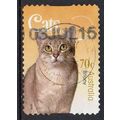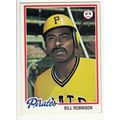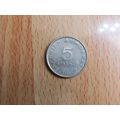Council Bluffs, Iowa - Broadway, Woolworths store - 1950s Plastichrome postcard
- Condition : Used
- Dispatch : 2 Days
- Brand : None
- ID# : 125000450
- Quantity : 1 item
- Views : 2315
- Location : United Kingdom

- Seller : justthebook (+1703)
- Barcode : None
- Start : Fri 28 Feb 2014 10:17:25 (BST)
- Close : Run Until Sold
- Remain : Run Until Sold
More Listings from This Seller view all
Seller's Description
- Postcard
- Picture / Image: Broadway, Council Bluffs, Iowa - shows old cars, shops including a branch of Woolworths
- Publisher: Denlap-Henline Publishers, North Platte, Nebraska
- Postally used: no
- Stamp: n/a
- Postmark(s): n/a
- Sent to: n/a
- Notes / condition:
Please ask if you need any other information and I will do the best I can to answer.
Image may be low res for illustrative purposes - if you need a higher definition image then please contact me and I may be able to send one.
------------------------------------------------
Postage & Packing:
UK (incl. IOM, CI & BFPO): 99p
Europe: £1.60
Rest of world (inc. USA etc): £2.75
No additional charges for more than one postcard. You can buy as many postcards from me as you like and you will just pay the fee above once. (If buying postcards with other things such as books, please contact or wait for invoice before paying).
Payment Methods:
UK - PayPal, Cheque (from UK bank) or postal order
Outside UK: PayPal ONLY (unless otherwise stated) please. NO non-UK currency checks or money orders (sorry).
NOTE: All postcards are sent in brand new stiffened envelopes which I have bought for the task. These are specially made to protect postcards and you may be able to re-use them. In addition there are other costs to sending so the above charge is not just for the stamp!
I will give a full refund if you are not fully satisfied with the postcard.
----------------------------------------------
Text from the free encyclopedia WIKIPEDIA may appear below to give a little background information (internal links may not work) :
*************
Council Bluffs is a city in and the county seat of Pottawattamie County, Iowa, United States[6] and is on the east bank of the Missouri River across from what is now the much larger city of Omaha, Nebraska. It was known until 1852 as Kanesville, Iowa — the historic starting point of the Mormon Trail and eventual northernmost anchor town of the other emigrant trails.
The population of Council Bluffs was 62,230 at the 2010 census. Along with neighboring Omaha to the west, Council Bluffs was part of the 60th-largest metropolitan area in the United States in 2010, with an estimated population of 865,350 residing in the eight counties of the Omaha-Council Bluffs metropolitan area. Council Bluffs is more than a decade older than Omaha. The latter, founded in 1854 by Council Bluffs businessmen and speculators following the Kansas-Nebraska Act, has grown to be the significantly larger city.
The city was named for an 1804 meeting of the Lewis and Clark Expedition with the Otoe tribe, which took place near present-day Fort Calhoun, Nebraska. The Council Bluffs became the generic name for the land on both sides of the Missouri River north of the mouth of the Platte River; the northwestern corner of Mills County, Iowa was then specifically called Council Bluffs.
The present city of Council Bluffs was first settled by Sauganash and his Potawatomi band in 1838. He won the respect of Americans in the War of 1812, but was later persuaded to remove from what became Chicago. Sauganash, the mixed-race son of Irish immigrant William Caldwell and a Mohawk mother, was also called Billy Caldwell. The Potawatomi main settlement, which numbered about 2,000 people, became called Caldwell's Camp. The U.S. Dragoons built a small fort nearby.
In 1838-39, the missionary Pierre-Jean De Smet founded St. Joseph's Mission to minister to the Potawatomi. De Smet was appalled by the violence and brutality caused by the whiskey trade, and tried to protect the tribe from unscrupulous traders. He had little success in persuading tribal members to convert to Christianity, and resorted to secret baptisms of Indian children.[7]
During this time, De Smet contributed to Joseph Nicollet’s work in mapping the Upper Midwest. He produced the first detailed map of the Missouri River valley system, from below the Platte River to the Big Sioux River. De Smet's map included the first European-recorded details of the Council Bluffs area.[8][9]
De Smet wrote an early description of the Potawatomi settlement, which captures his bias:
""Imagine a great number of cabins and tents, made of the bark of trees, buffalo skins, coarse cloth, rushes and sods, all of a mournful and funeral aspect, of all sizes and shapes, some supported by one pole, others having six, and with the covering stretched in all the different styles imaginable, and all scattered here and there in the greatest confusion, and you will have an Indian village.""[10]
As more Indian tribes were pushed into the Council Bluffs area by pressure of European-American settlement to the east, inter-tribal conflict increased, fueled by the illegal whiskey trade. The US Army built Fort Croghan in 1842 to keep order and try to control liquor traffic on the Missouri River.
In 1844, the Stephens-Townsend-Murphy Party crossed the Missouri River here on their way to blaze a new path into California across the Sierra Nevada Mountains. Beginning in 1846, there was a large influx of Latter-day Saints into the area, although in the winter of 1847-1848 most Latter-day Saints crossed to the Nebraska side of the Missouri River. Initially, the area was called ""Miller's Hollow"", after Henry W. Miller, who would be the first member of the Iowa State Legislature from the area. Miller also was the foreman for the construction of the Kanesville Tabernacle.[11]
By 1848, the town had become known as Kanesville, named for benefactor Thomas L. Kane, who had helped negotiate in Washington DC federal permission for the Mormons to use Indian land along the Missouri for their winter encampment of 1846-47. Built at or next to Caldwell's Camp, Kanesville became the main outfitting point for the Mormon Exodus to Utah, and is the recognized head end of the Mormon Trail. Edwin Carter, who would become a noted naturalist in Colorado, worked here from 1848-1859 in a dry goods store. He helped supply Mormon wagon trains.
Settlers departing west into the sparsely settled unorganized parts of the Territory of Missouri to the Oregon Country and the newly conquered California Territory through the (eventual) Nebraska Territory from Kanesville traveled by wagon trains along the much-storied Oregon, Mormon, or California Trails into the newly expanded United States western lands—after the first large organized wagon trains left Missouri in 1841, the annual migration waves began in earnest by spring of 1843 and built up thereafter with the opening of the Mormon Trail (1846) until peaking in the later 1860s when news of railroad progress had a braking effect. By the 1860s, virtually all migration wagon trains were passing near the renamed town. The wagon train trails became less important with the advent of the first complete transcontinental railway in 1869 but while trail use diminished after that, their use continued on at lesser rates until late in the nineteenth century.
The Mormon Battalion began their march from Kanesville to California during the Mexican–American War. This was where their practice of plural marriage was first openly practiced. Orson Hyde began publishing The Frontier Guardian newspaper, and Brigham Young was sustained as the second president of The Church of Jesus Christ of Latter-day Saints (LDS church). The community was transformed by the California Gold Rush and the majority of Mormons left for Utah by 1852.
In 1852, the town was renamed Council Bluffs. It continued as a major outfitting point on the Missouri for the Emigrant Trail and Pike's Peak Gold Rush, and entertained a lively steamboat trade. With the completion of the Chicago and North Western Railway into Council Bluffs in 1867, the transcontinental railroad in 1869, and the opening of the Union Pacific Missouri River Bridge in 1872, Council Bluffs became a major railroad center. Other railroads operating in the city came to include the Chicago, Rock Island and Pacific Railroad, Chicago Great Western Railway, Wabash Railroad, Illinois Central Railroad, Chicago, Burlington and Quincy Railroad and the Chicago, Milwaukee, St. Paul and Pacific Railroad. In 1926, the portion of Council Bluffs west of the Missouri River seceded to form Carter Lake, Iowa, but this did not affect the main growth.
By the 1930s, Council Bluffs had grown into the country's fifth largest rail center. The railroads helped the city become a center for grain storage. Massive grain elevators continue to mark the city's skyline. Other industries in the city included Giant Manufacturing, Reliance Batteries, Monarch, Mona Motor Oil, Woodward's Candy, Kimball Elevators, World Radio, Dwarfies Cereal, Georgie Porgie Cereal, Blue Star Foods, and Frito-Lay. During the 1940s, Meyer Lansky operated a greyhound racing track in Council Bluffs. The late 20th century brought economic stagnation, a declining population, and downtown urban renewal.
The 1972 world heavyweight title boxing bout between Frazier and Stander, held in the city, brought the city some national attention
type=printed postcards
theme=topographical: rest of the world
sub-theme=north america
county/ country=usa
number of items=single
period=1945 - present
postage condition=unposted
Listing Information
| Listing Type | Gallery Listing |
| Listing ID# | 125000450 |
| Start Time | Fri 28 Feb 2014 10:17:25 (BST) |
| Close Time | Run Until Sold |
| Starting Bid | Fixed Price (no bidding) |
| Item Condition | Used |
| Bids | 0 |
| Views | 2315 |
| Dispatch Time | 2 Days |
| Quantity | 1 |
| Location | United Kingdom |
| Auto Extend | No |




 for 1 item(s)
for 1 item(s)

















